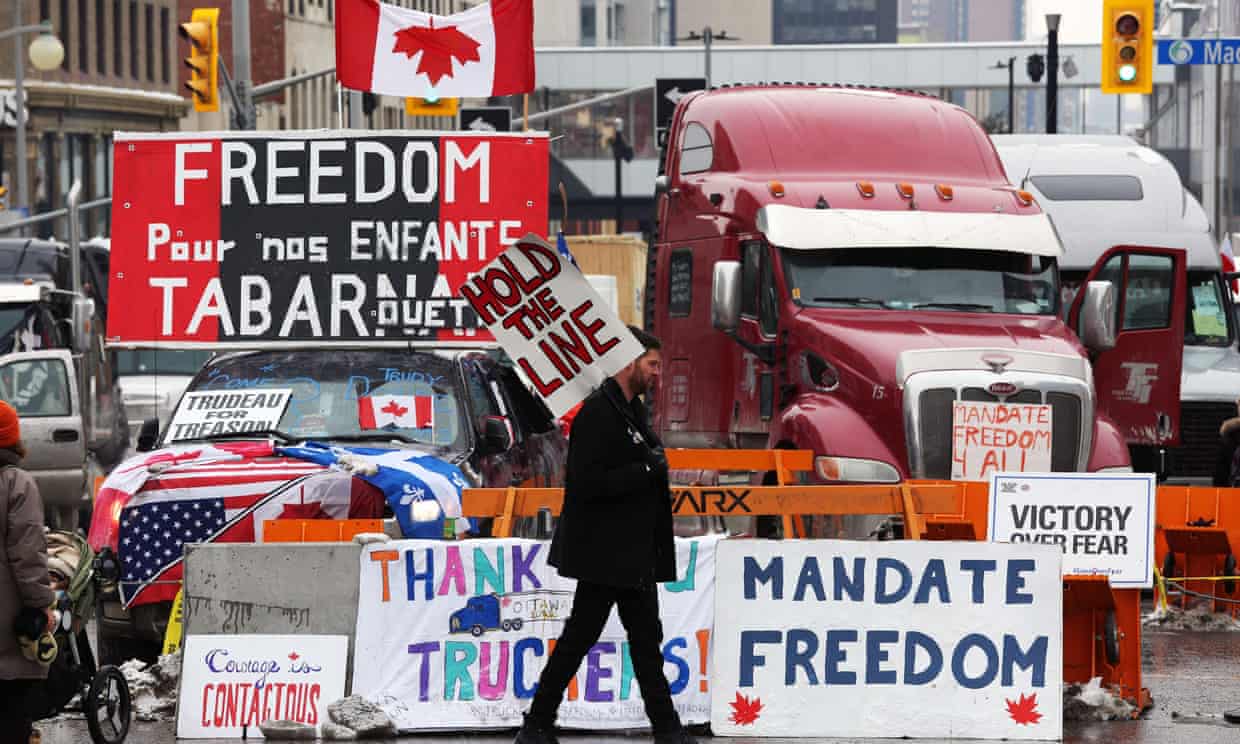On Jan. 22, Freedom Convoy protestors amassed outside of the Canadian Parliament demanding an end to a mandate for truckers in Canada to be vaccinated against COVID-19.
The truckers were eventually joined by thousands of other Canadians upset with these lockdown policies and Trudeau’s government.
The mandate particularly applied to those reentering Canada from foreign countries, including truckers coming back from the United States, as well as anyone on a flight coming back to Canada.
The movement is led by one Tamara Lich of the new Maverick Party in Canada, a secessionist party advocating for autonomy for the western provinces of Canada and possible secession and independence from the rest of the country.
The party was pro convoy, and their most recent publication on their website hails the purported successes of the movement as fixing the economy and advancing the cause of freedom. The document also acknowledged the resignation of Tamara Lich, citing her commitment to “remaining in Ottawa until all restrictions are lifted.”
Lich was arrested on Feb. 17 on charges of “counseling to commit mischief,” relating to her efforts to crowdfund the movement. She was denied bail and will see trial on March 2.
In addition to protests in Ottawa, some under the banner of the Freedom Convoy blocked the Ambassador Bridge into Detroit on Feb. 7, disrupting automotive production in Detroit as parts were not able to be shipped. Police broke up the protest on Feb. 13, arresting an estimated 25-30 people.
Eventually, the government moved to end the protests on Feb. 15, invoking acts for emergency power citing a threat to Canadian national security. The protestors had disrupted the national supply chain and some arrested protestors were heavily armed.
Police moved in on Feb. 18 to finally clear out the largest block of the protestors, clearing Ottawa within two days. At least 100 people were arrested on Feb. 19 and 21 vehicles were towed in the efforts to clear out the streets.
While the movement did not succeed in convincing the government to lift mandates, it did secure a victory for right populism in Canada by being a movement that managed to gain traction, where it had failed to do so previously.
In 2019, a similar movement was launched to protest government energy policy and advocate for oil pipelines. The protest did not garner as much attention as the most recent convoy, and devolved into complaints about immigration that were often overtly racist.
Due to the nature of Canada’s political culture and parliamentary system, it is not as easy for right populists to gain a foothold in politics as it has been in the United States. This means that the mainstream Conservative Party has not fully embraced politics like that of its fellow conservatives in the U.S.
But, the movement is part of a growing trend in Canadian politics to embrace what were less mainstream positions. The Conservative Party leader, Erin O’Toole, was recently removed from power over a lack of sufficient support for the convoy movement, a move which echoes the Republican censure of Liz Cheney and Adam Kinzinger for participating in the Congressional investigation into the Jan. 6 protests.
The movement indicates that Canada may be joining the rest of Western democracies in the rise of right populism. It also may be the beginning of a trend that will travel outside of Canada’s borders, as a recent attempt to create a similar convoy in the U.S. launched recently, though it failed to garner much support.
One thing that is certain is that this political trend is not leaving any time soon. It will manifest itself in different ways as it progresses, adapting to the conditions at hand, but the right wing populist wave is not a fluke.

